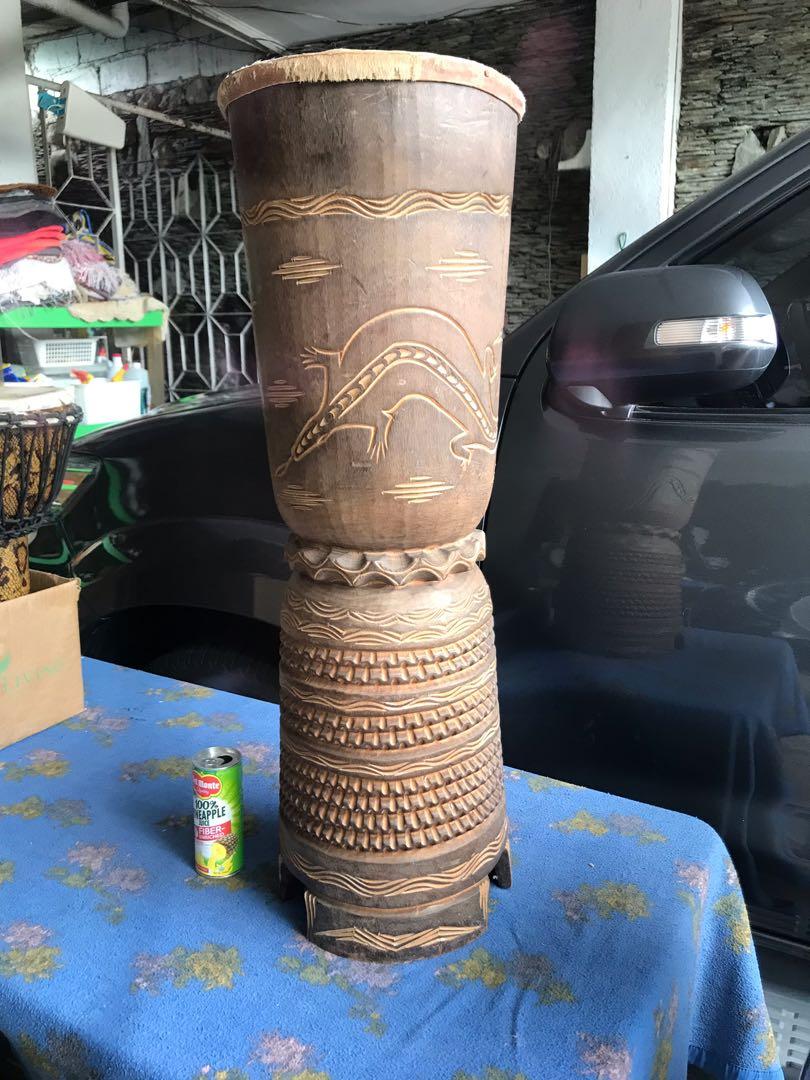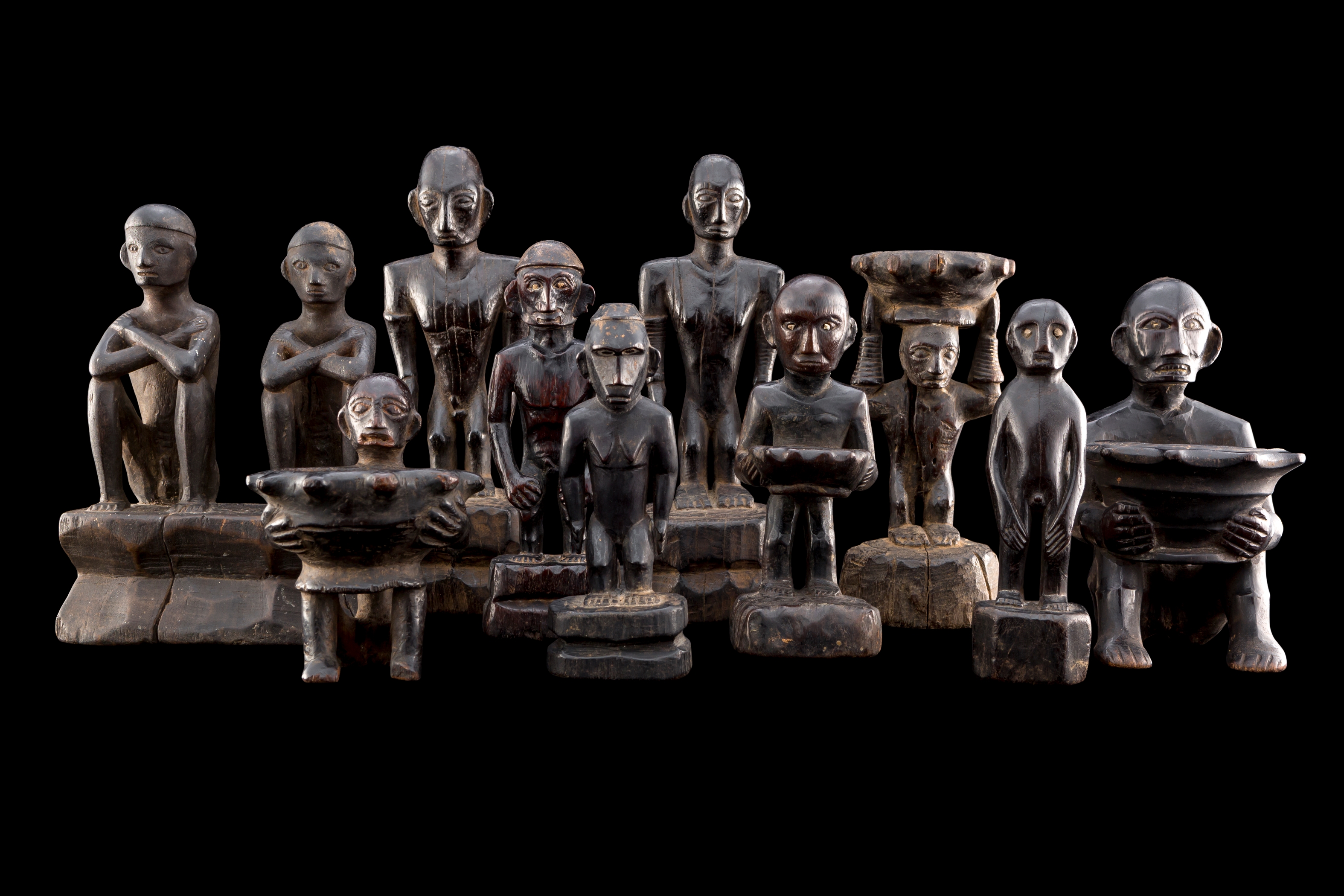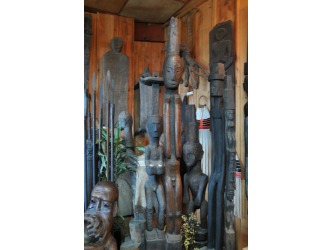the wooden chair of ifugao is called
It is made of narra or ipil-ipil and the original design is called ginulding-gulding meaning like. They are carved from a single piece of wood and depict humans with very unrealistic features.
It depicts the wealth and power of the owner who is called Kadagnayan or a person who belongs to the higher status in their society.

. It depicts the wealth and power of the own in who is called Kadanagyan. It depicts the wealth and power of the one who own called Kadanagyan or a person who belongs to the higher status in their society. Hagabi a wooden chair of Ifugao which symbolizes his status as a citizen in their community.
It is a wooden chair of Ifugao which symbolizes his status as a citizen in their community. Its prestige wasnt just showcased but the hagabi Ifugao Prestige Bench was sold for a whopping 22 million pesos including the buyers premium from its starting bid of 1 million pesos. It depicts the wealth and power of the own who is called Kadanagyan or a person who belongs to the higher status in their societyThis chair is made of Narra or Ipil-Ipil and the original design is called Ginulding-Gulding meaning like a goat-like head.
The rich culture of the Ifugao tribe has been showcased at the recently concluded The Kingly Treasures Auction 2020 held by Leon Gallery on November 28 2020. It depicts the wealth and power of the own who is called Kadanagyan or a person who belongs to the higher status in their society. Only the rich can afford to own it together with a ritual after the completion of their char.
It depicts the wealth and power of the owner in who is called Kadanagyan a person who belongs to the highest status in their society. Igorot traditional funeral practices and burial customs. The wooden seat or hagabi is placed under the eaves in the stone-paved yard that surrounds the little wooden four-stilted house with the high-peaked thatched roof that is so typical of the country and is.
Sarimanok Another one is Hagabi a wooden chair of Ifugao which symbolizes his status as a citizen in their community. Some of the figures have holes on the ear lobes and human hair is planted on the head. The funeral practices and burial customs of the Cordillera Igorots encompass a wide range of personal cultural and traditional beliefs and practices that they practice in connection with death disgrace and proper respect interference and remembrance of the dead.
These practices are widely shaped by the various religions and. On special occasions such as harvest time bulul figures are dressed in Ifugao costumes. This head-dress comes from the Ifugao people in Luzon northern Philippines.
Up to 24 cash back Dismayed Chair The carver Benito Binusnie of Bayongan village portrays his wife who has been grumbling that life is nothing more than dawn-to-dusk labor in a rice field as a victim of a strange transformation. HAGABI Hagabi is the wooden chair of Ifugao which symbolizes his status as a citizen in their community. Hagabi Another one is HAGABI a wooden chair of Ifugao which symbolizes his status as a citizen in their community.
A fairly type of Philippine Folk Art is the art of shaving bamboo into artful creations that can be used as a decor for arches or the home. Hagabi is a traditional large ceremonial benches carved for wealthy Ifugao families as a symbol of wealth power and prestige. It is a wooden chair of Ifugao which symbolizes his status as a citizen in their community It depicts the wealth and power of the own who is called Kadanagyan or a person who belongs to the higher status in their society.
The chair is made of Narra or ipil-ipil and the original design is called Ginulding-Gulding meaning like a goat-like head. The bulul is a carved wooden statue that the Ifugao people of Northern Luzon used to guard their rice crop. The headdress of Ifugao tribe a woven frame is decorated with feathers seated in the top is a wooden figure the god of rice Bul-ul.
Bul-ul give good luck to the harvest the chief of the village would probably wear this crown during planting and rituals harvest. Its woven frame is decorated with feathers and seated on top is a wooden figure - the rice god Bul-ul. The province however has excess production of corn especially in the town of Alfonso Lista which is the home of a large corn warehouse.
They are also adorned. The economy of Ifugao is based on agriculture and tourism. Was intended to create artful toys for kids.
This chair is made of Narra or ipil-ipil and the original design is called Ginulding-gulding meaning goat-like head. This is so far the highest price paid for Philippine indigenous item as it surpassed previous world record of the bulul another Ifugao artifact priced at 280000. The Ifugao Wooden Idol by Marilou M.
It depicts the wealth and power of the own in who is called Kadanagyan or a person who belongs to the higher status in their society. Their textiles are renowned for their sheer. The backrest is the chair back which supports the posture of the person seated in the chair.
HAGABI It is a wooden chair of Ifugao which symbolizes his status as a citizen in their community. It also signifies fertility and is sometimes believed to house the spirits of ancestors. A Bulul has a simplified shape of a human being whether male or female.
The wooden figure wearing a band of yellow and red woven cloth. These bulul are supposed to represent the ancestors of the Ifugaos and the people supposedly gain power from the presence of ancestral spirits. It depicts the wealth and power of the one who is called Kadanagyan or a person who belongs to the higher status in.
Although rice is the primary agricultural product the province is deficient in the staple food and has to import some of its need from other provinces. The Bulul is an Ifugao anthropomorphic carving that symbolizes an Ifugao rice god or guardian spirits. Can also be used to create women baskets bags and even fans.
Bul-ul brings good luck to the harvest and the village chief would probably wear this crown during planting and harvest rituals. HAGABI A wooden chair of Ifugao which symbolizes his status as a citizen in their community. Bulul Ifugao rice god or guardian spirits.
Her right leg is mutating into a ga-ud the long-bladed wooden spade there is an example on display in the museum still used instead of steel by a. Only the rich can afford to own it together with a ritual after the completion of their chair. The headrest is the upper part of a tall chair back and supports the head andor neck of the person seated in the chairThe presence of a headrest on a task chair like a desk chair can help ease neck tension and neck strain.
Ifugao are unique among all ethnic groups in the mountain province for their narrative literature such as the hudhud an epic dealing with hero ancestors sung in a poetic manner. While the male image is dressed in loincloth the female figure is dressed with a skirt. Rice granaries alang are protected by a wooden guardian called a bulul.
The Cadangyan families of Ifugao are largely inter-related. Also unique to the Ifugao is their woodcarving art most notably the carved granary guardians bulul and the prestige bench of the upper class the hagabi. The bulul sculptures are highly stylized representations of the ancestors of the Ifugao and are thought to gain power and wealth from the presence of the ancestral spirit.
The most common presentation of Puni Art that we see every holy week.
This Ifugao Bench Was Sold At A World Record Price At An Auction Bcg

Wooden Ifugao Figures From Anthropology S Philippines Collection Amnh

Ifugao Refers To The Group Of People Living In Ifugao Province

Ifugao Native House Modern Contemporary House Plans Bamboo Architecture Contemporary Modern House

Z Stool Or Side Table Twig Furniture Diy Wood Plans Rustic Log Furniture

Vibtage Big 78cm Philippine Tribal Ifugao Wooden Drum Tambol Furniture Home Living Home Decor Other Home Decor On Carousell

Ifugao Divinities Philippine Mythology Beliefs

Early 20th Century Old Ewe Wood Tribal Doll Early 20th Century Tribal African Art

Gallery Of Exhibits Museum Of Cordilleran Sculputre

Isabel Chair In Harbor Natural Accent Chairs For Living Room Oversized Chair Living Room Small Chair For Bedroom

William Thompson S Scalp Scalped In 1867 By Cheyenne In Nebraska Native American Indians Native American History Battle Of Little Bighorn

Pin On Cavite Consumer Culture

Hagabi An Unusual Trivia Of Philippine History And World Facebook





